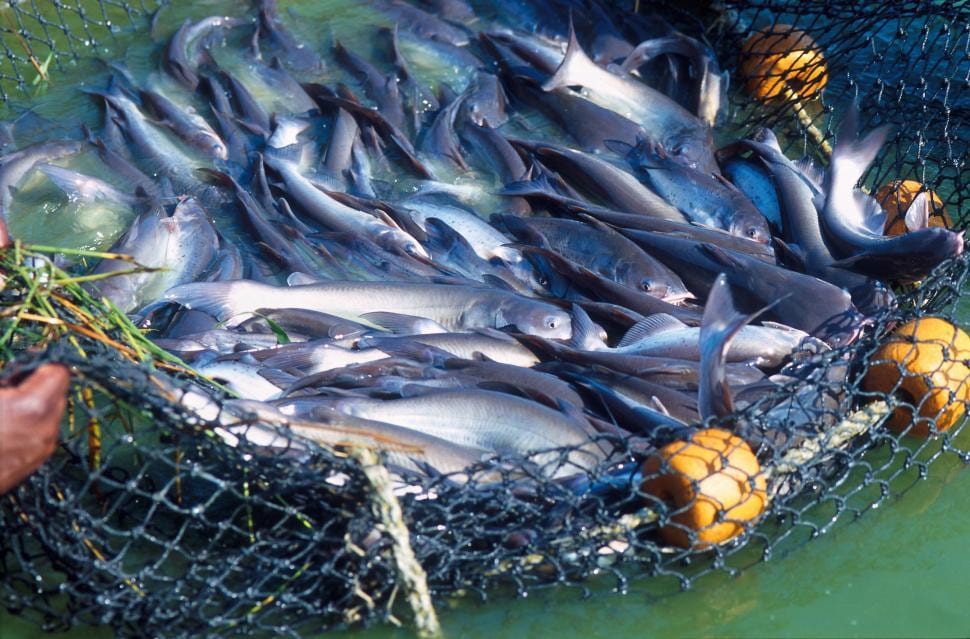Whether in a body of water, swimming in an aquarium, or on a plate, fish and marine life have made an impact on society. These animals are sourced from fisheries, which create jobs, feed communities, and are at the center of life for millions of people. In 2020, aquatic foods supplied 17% of total animal protein eaten globally. Fisheries are often defined as a geographic location where a population of an aquatic animal, like fish or oysters, are harvested for use. Fisheries can also refer to a certain species across many bodies of water or a cultural use of fish populations, expanding the meaning beyond just fish themselves. While production in the fishing and aquaculture industries are reaching all-time highs, fisheries still face challenges.
Fisheries face many threats, including overfishing, commercial fishing pollution like discarded nets and tools, the spread of invasive species, and the unintentional catch of other species while fishing. Climate change is exacerbating these challenges, causing ocean acidification, abnormal migration patterns, and rising water temperatures.

Catfishes caught in a net. / Credit: Freerange Public Domain Archive
The main goal of fisheries management throughout history has been to maintain its stock sustainability. In this context, sustainability has been defined by calculating “maximum sustainable yields” for fisheries, which allows the maximum possible harvest without depleting a population beyond recovery. Despite this goal, global marine life populations are continuing to decline while also being threatened by the rising threat of climate change.
A new approach to fisheries management and extraction is needed. Sustainability isn’t purely about fish population and commercial harvest — which is all that maximum sustained yield takes into consideration. Continuing to harvest fisheries to the extreme and ignoring the impacts of climate change is not an option. Instead, sustainability needs to be managed more broadly to promote social and cultural aspects along with the ecological and economical; this is necessary for a just future for fisheries.
From indigenous fishers to commercial fishers to environmental activists, the tensions are high in regard to fishery management. While commercial fishing can result in over harvesting, it employs thousands of people who suffer when catch limits are reduced. Designating no-take sanctuaries can help protect aquatic populations that are declining due to overfishing, but these policies can infringe on the rights of indigenous communities and subsistence fishers who were not depleting the stock in the first place. Within these discussions is the beginning of reform for the current model of fisheries management and an answer to the question of fisheries sustainability.
What does sustainability look like for fisheries? Can conservation and preservation efforts be used to protect all aspects of the fishery, or are the fish alone the priority? For my beat this semester, I aim to explore how these questions are being answered.